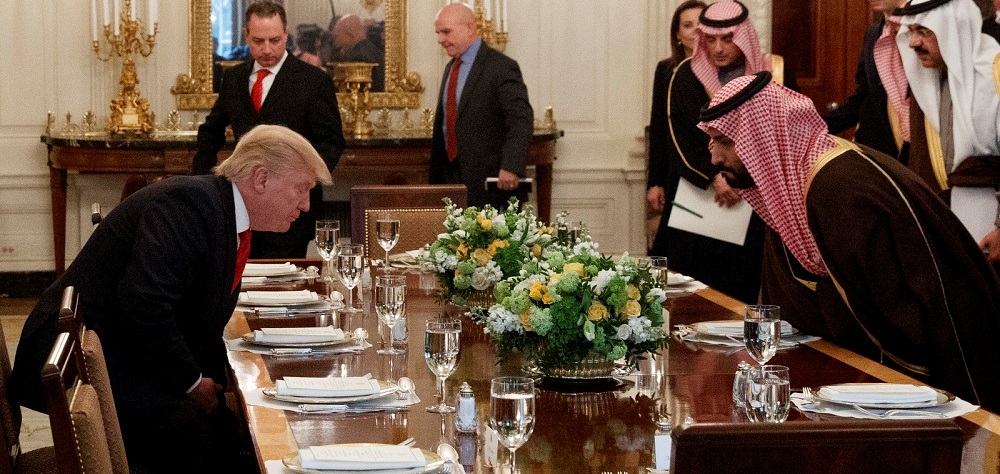Alwaght- The American President Donald Trump has chosen Riyadh as destination of his first official foreign visit as leader of the US, aiming at sending significant messages to the regional countries, among them Iran.
Many analysts argue that the expected trip to Saudi Arabia is mainly meant to lay foundation of policy to counter Iran further, especially that Israeli regime, a regional archenemy of the Islamic Republic, will be next to host the American president as he continues his trip.
Such trips are understood by the political experts as major efforts to bring closer Saudi Arabia to the Israeli regime and thus accelerate the process of building an anti-Iranian alliance in the region. On the other side, the Saudis, who restored hope to receive support of their key ally after they felt neglected by the Trump’s predecessor Barack Obama, will try to seize the opportunity in a bid to persuade the Americans that they need to press Tehran even further on the one hand and engage deeper in the regional cases. Their main goal is to check the growing Iranian influence in countries such as Yemen, Syria, Iraq, and Lebanon using the anti-Tehran US stances and backing.
Still from another dimension, the visit to the region can mean that the new American president is eyeing overhaul of the US's West Asian strategy which during the Obama presidency went toward gradual retreat from the region and instead heading to East Asia under “pivot to East Asia” policy.
As the US seeks modification of its policy, the recent months witnessed Yemen, Iraq, and Syria conflict topping the Trump’s West Asian foreign policy agenda. The American military and political officials have recently made frequent visits to the regional states and showed that Washington is more seriously pursuing its plans, including military actions, in the region. For instance, the last month saw a series of practical steps by the US, like sending troops to the war-ravaged Yemen which is subject to three-year-long Saudi bombing campaign, carrying out missile strikes against Syria, and dropping in Afghanistan the largest non-nuclear bomb MOAB– Mother Of All Bombs.
The new strategy sees confrontation of Iran’s power gaining through having back of Saudi Arabia as it intervenes in the regional hotspots. Trump administration will further help Riyadh to force-stop front line progresses of Yemen’s Ansarullah movement and the forces of its ally the former Yemeni President Ali Abdullah Saleh. The same support will be offered to the kingdom as it intervenes in Syria to equip the anti-Damascus armed groups. More from the new American policy, Washington has been studying plans to send more troops to Afghanistan to ensure a long-term stay there. Additionally, the Americans will do their best to hold a sway in the post-ISIS Iraq.
To this end, Trump during his Riyadh visit will put in action the US's threadbare policy of Iranophobia as he pursues his country’s military and political strategy through which he can sell more arms to the Saudis and other allied Arab states. Reuters news agency last week reported that the US and Saudi Arabia are in talks to strike a new weapons deal just ahead of the expected Trump visit. The report added that the negotiations are supposed to result in the US finalizing a contract to supply the Arab kingdom with an array of military equipment worth of tens of billions of US dollars.
Beside being a warning signal to Iran, this trip, the analysts say, can mark a turning point in the US-Saudi ties since the Obama presidency. It can reflect the rejuvenated strategic partnership of the two sides during which a set of cases including the Syrian crisis, Arab-Iranian tensions, as well as the Yemen and Iraq conditions will be subject of discussion.



























